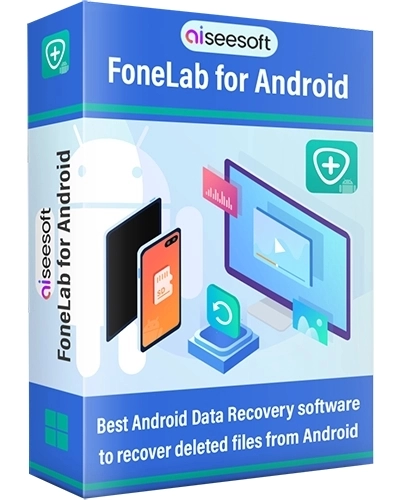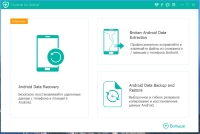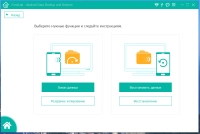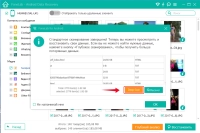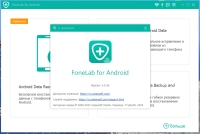If you’re struggling to find Complete phone control Aiseesoft FoneLab for Android 5.0.36 Full + Portable version by elchupacabra, HaxNode offers a reliable solution. Known for its wide range of direct links, torrents, and pre-activated software, HaxNode ensures easy access to the programs you need without the usual hassle. Whether you’re a professional seeking industry-specific tools or an enthusiast looking to explore new utilities, HaxNode is your go-to resource for straightforward, secure software her!. You may also like Video downloading and editing – Aiseesoft Video Converter Ultimate
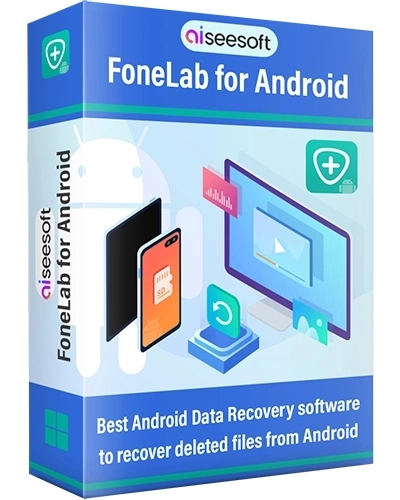
Aiseesoft FoneLab for Android is a popular tool that has already become almost indispensable for Android smartphone users to manage their mobile assistants using a PC. The application works with almost all content or data that a smartphone operates on: this, of course, requires synchronizing content via cable or wireless connection, managing contacts, multimedia content, SMS and MMS messages, converting video files for further viewing on a smartphone, backup or data recovery.
System requirements:
OS:Windows 11/10/8.1/8/7 (x86/x64)
CPU: 1GHz Intel/AMD CPU or above
RAM: 1GB RAM or more
Torrent Aiseesoft FoneLab for Android 5.0.36 Full + Portable version by elchupacabra details:
Main features:
Recover deleted text messages, contacts, call history from Android phones, tablets and SD cards.
Recover deleted photos, videos, music, and documents from Android phones, tablets and SD cards.
Saving your Android data from accidental deletion, water damage, etc.
Support Samsung, LG, HTC, Sony, Huawei, ZTE phones, tablets, etc.
A very simple, fast and secure program for backing up data on Android under Windows.
Support Android 5.0 and above.
Supported Files:
Contacts
Messages
Photo
Video
Audio
Call Logs
whatsapp
Documentation
What is Root?
Many people have heard about Root rights on Android, but few have received them for fear of harming their device. They are probably partly right, because having access to the main administrator account, you automatically gain not only full control over the operating system with the ability to customize your device according to your preferences, but also a loophole for uninvited guests.
So, what is Root?
Root (from the English root – root; read “root”), or superuser – a special account in UNIX-like systems with an identifier (UID, User IDentifier) 0, the owner of which has the right to perform all operations without exception.
Benefits of Root
Having access to the superuser profile, you get a number of features that are not available in normal operation.
First of all, obtaining Root makes it possible to remove standard applications imposed by device manufacturers, change themes and shortcuts, as well as launch specialized applications that significantly expand the capabilities of the smartphone (usually such applications require Root rights). In addition, it becomes possible to change system files (Recovery image, Bootloader or images displayed during boot), run Linux executable files, install applications to a memory card, or transfer program caches to it. In some cases, after modifications to the OS, available only after obtaining Root rights, it is even possible to achieve a small, but still increase in battery life performance.
Disadvantages of Root
As with everything else, gaining Root access has its drawbacks. First of all, the device loses its warranty and in the event of “something like that”, provided that you cannot roll back your “device” to the official firmware, you will have to repair it solely at your own expense.
The rooting procedure is simple – by doing everything in accordance with the descriptions, you can achieve what you want, but if you do not have any experience, the potential risk remains – under unfavorable circumstances, the device may turn into an unusable “brick”.
Another important drawback is that opening Root privileges implies interference with system files and entails the loss of the ability to update over the air (install OTA updates). More precisely, the ability to update may not be lost, but the consequences of the update will be unpredictable. The most harmless of them is the loss of root privileges, but more fatal options are also possible – up to and including obtaining a brick.
Types of Root rights
There are several types of Root rights:
Full Root – permanent rights that remove established restrictions. It is not recommended to update the operating system.
Shell Root – similar to Full Root, but without access to the system folder.
Temporary Root – temporary Root access. After rebooting the device it disappears.
How to get Root rights?
The 4PDA forum describes a lot of universal methods and methods for obtaining Root rights on devices running Android. Most of them involve the use of special programs and a computer. Among such programs, Universal AndRoot, Unlock Root, z4root, Revolutionary and others are well known, promising to get what you want in “two clicks”. Unfortunately, not all of them can 100% help you achieve what you want, specifically for your mobile device. Moreover, such software can be detected as a virus because it makes changes to the kernel of the Android operating system. In this case, the antivirus is partly right – all these programs are virus exploits that penetrate the system kernel and when downloading or installing them, it is recommended to disable the security software.
Another way to obtain Root rights is to install modified firmware on your smartphone. In this case, all the work has already been done for you by specialists, and all you have to do is choose the firmware that is suitable specifically for your device. By the way, there you will also find various decorations and additions for your smartphone model.
It is worth noting that some phones have protection supplied by the manufacturer – NAND lock. Most often, HTC was guilty of this, so the owners of such devices were out of luck – NAND lock prohibits making any changes to the /system partition (it will not allow anything to be written/deleted to/from the /system partition, even if it is remounted for writing), which is why It is impossible to install the Superuser program in the /system folder.
It is still possible to Root phones with NAND lock, but it will not be fully functional (you can only get Shell root or Temporary Root). You can find out whether your device has NAND lock in the discussion thread for your model in the Android – Devices section.
How to check that root rights have been obtained?
It is possible (but not necessary) for an application called Superuser or SuperSU to appear in the list of programs
When running programs that require root privileges, a corresponding prompt will pop up
Programs that previously did not work, citing lack of rights, are now fully functional
In a terminal emulator, when you enter the su command, a hash prompt appears: #
This verification method depends on the method of obtaining root rights (for example, when using Universal Androot, this verification method is unacceptable). In a terminal emulator, type the command “/system/bin/id”[Enter]. If you get “uid=0(root) gid=0(root)” in response, then you have achieved what you wanted.
Bottom line
Now you know why you need to obtain Root rights in the Android operating system. Some users believe that Root is necessary, while others live quite well without it. It’s up to you to decide whether to perform this procedure or not, just don’t forget about the warranty and everything will be fine.
Features of RePacka:
1. Installation of the program or unpacking of the portable (portable app format) version combined in one distribution package
2. Does not require registration (pawel97 patch)
3. Multilingual interface (including English /added translation TryRooM/)
4. Picks up the external settings file settings.reg (if located next to the installer)
“Silent” installation with the /SILENT or /VERYSILENT switches (or the “Silent Install.cmd” file)
For the “Silent” installation of the portable version, the additional key /PORTABLE=1 (or the “Unpack Portable.cmd” file)
Uncheck the box if desired.
Screenshots of Aiseesoft FoneLab for Android 5.0.36 Full + Portable version by elchupacabra torrent:
Download Aiseesoft FoneLab for Android 5.0.36 Full + Portable version by elchupacabra via torrent:
Special Note
⚠️ Important: Do not use cracked software! Choose authentic versions for safety. Our software is for educational purposes, gathered online. Download responsibly. Regards, HaxNode 🛡️

